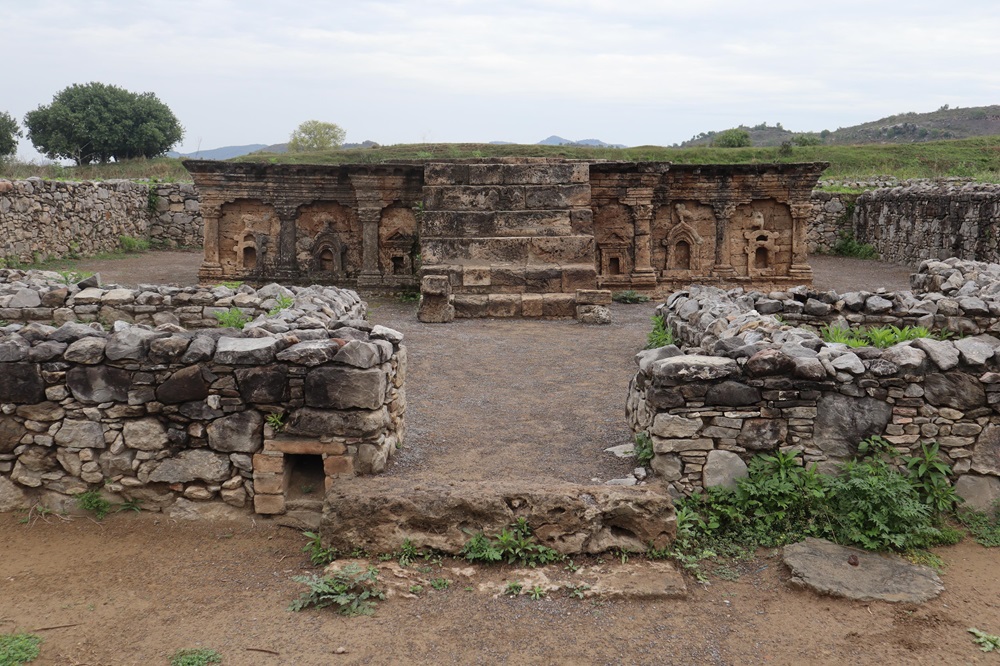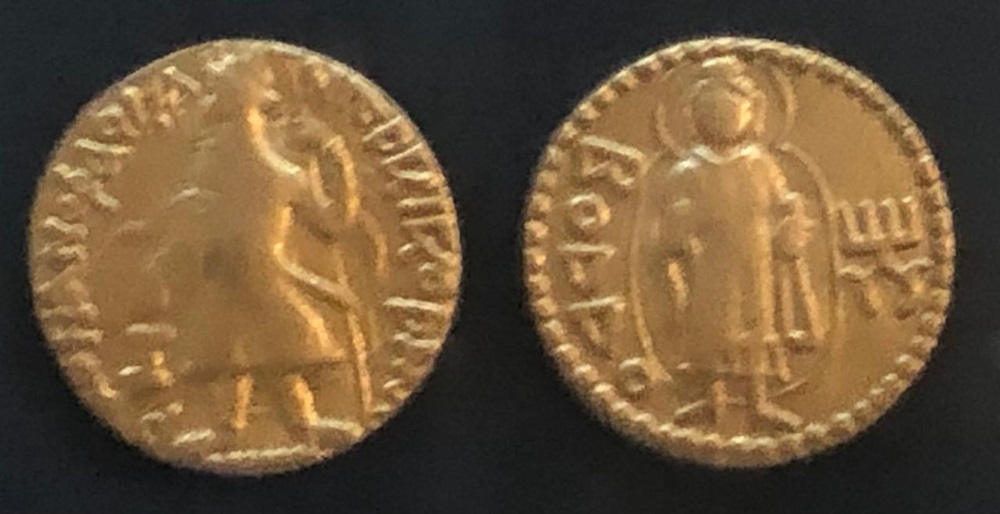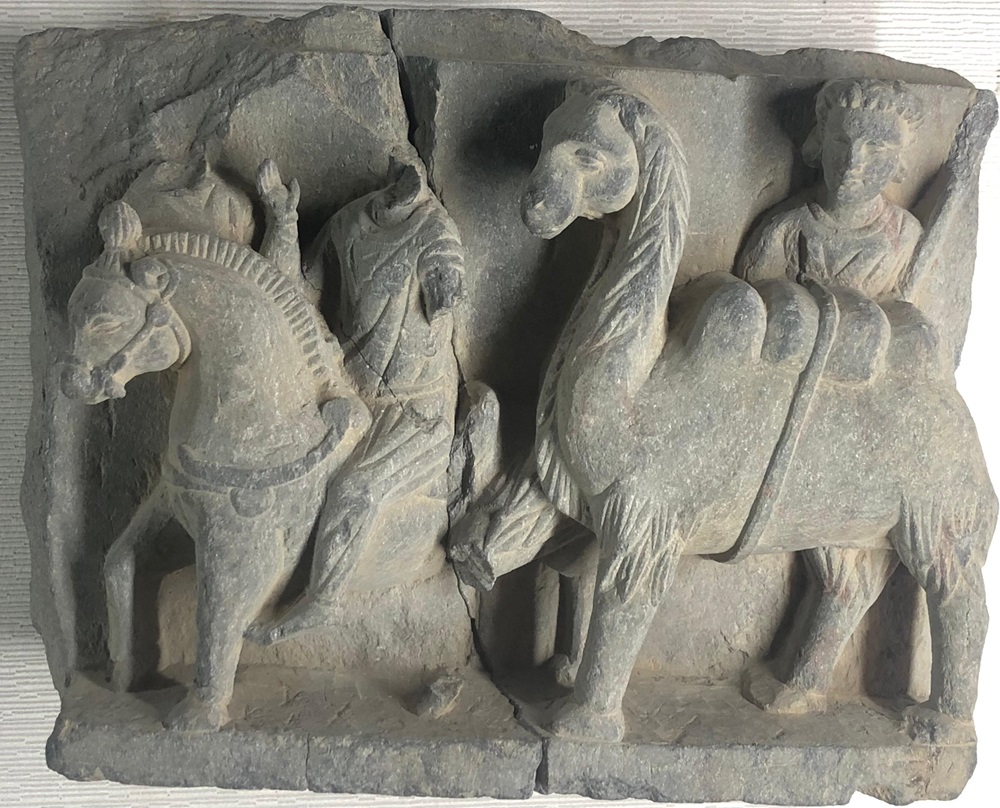Written by: Sirat Gohar Daudpoto
Posted on: August 29, 2024 |  | 中文
| 中文
Buddhist rock carvings in Chilas
The archaeological record of the Buddhist heritage of Pakistan consists of a large number of artistic objects and representations. It includes sculptures and paintings of Buddha, Bodhisattvas and devotees of Buddhism, the sculptural representations of religious monuments and symbols associated with Buddhism and the depictions of Buddhist figures and symbols in rock art. Together, this artistic-religious material including rock art representations bear witness to the glorious past of Buddhism in the country where it flourished for centuries.

Buddhist stupa in the ancient city of Sirkap in Taxila showing western and local influences (Photo by the author).
Archaeologically speaking, it is believed that the tradition of making images of Buddha, Bodhisattvas and other prominent figures in Buddhism originated around 1st century CE in the Gandhara region of ancient Pakistan, under the patronage of Mahayana sect of Buddhism during the Kushan dynasty. It is generally accepted that the images of Buddha are not found in the Buddhist art earlier than the 1st century CE. This does not mean that the history of Buddhist art in Pakistan is not older than the 1st century CE, but it goes almost three centuries back to the 3rd century BCE when Ashoka was ruling over ancient Indo-Pakistani subcontinent. However, it needs to be pointed that in the early Buddhist art Buddha was represented with different symbols such as bowl, lotus, tree, throne and dharmachakra amongst others.

A gold of the Kushan emperor Kanishka with an image of Buddha on one side at exhibit in Lahore Museum (Photo by the author)
The most striking feature of the Buddhist art of Pakistan is regional distinctiveness and variations in art forms. The sculptures of Gandhara (upper Punjab and Khyber Pakhtunkhwa) are distinct from those of Sindh. Similarly, the Buddhist rock art of Khyber Pakhtunkhwa, Gilgit-Baltistan and Sindh is also different from each other in style and form. The difference between the Buddhist art of each region of Pakistan can be distinguished easily, likewise the similarities in technique, form and content are also discernable. For example, in the rock art depictions of Buddha and Bodhisattvas and the Buddhist stupas and symbols in Gilgit-Baltistan, Khyber Pakhtunkhwa and Sindh sameness can be detected, but at the same time the rock art of Buddhism from each region can be distinguished and recognized with reference to a particular region of rock art in Pakistan.
Furthermore, in terms of Buddhist art, the Gandhara region of Pakistan is known all across the world owing to its peculiar art of Buddhism. The art of Gandhara or ‘Gandhara art’, as it is popularly called, is often called Buddhist art. However, Gandhara art is not completely Buddhist art, although most of the art of Gandhara in one way or the other is related to Buddhism but still there is a portion of it which is non-Buddhist, and calling it Buddhist art is an art historical research problem that needs to be determined. By taking a close look of the artistic features of the Gandhara art, one will come to know that the art of Gandhara is a mixture of styles and characteristics of the art of different countries (e.g. Persian, Greek, Roman, Indian and Central Asian). And that is why it was, and is, called with different terms such as the Greco-Buddhist Art, Indo-Afghan Art, Indo-Roman/Roman-Indian Art. It is true that the art of Gandhara, including the Buddhist art, shows western, Central Asian and Indian influences. Particularly, in the Buddhist art of Gandhara the influence from these parts is very prominent. For example, Gandharan Buddha or Bodhisattva is often depicted wearing inner and outer robes that completely cover his body from shoulders to anklets showing inspiration from the west, quite different from the images of Buddha and Bodhisattvas from other areas that show more local influence. Another peculiar and distinctive feature of the Buddhist art of Gandhara is material (stone (schist, phyllite), stucco and clay), which were used to make Buddhist art. Generally, it can be said that the iconography of the Buddhist art of Gandhara makes it distinct from the Buddhist art of other parts of Pakistan, and also from the rest of the world.

An example of Gandharan art, a relief panel depicting a Silk Road caravan with a horse and Central Asian camel (Photo by the author)
The conclusion is that art associated with Buddhism is found in almost all regions of Pakistan. The Buddhist art of the country’s each area has its own distinctive characteristics; for example, the Gandharan Buddhist sculptures and paintings are different from those found in Sindh (note - only fragmentary evidence of Buddhist murals was recorded at the archaeological site of Vijnot in the Ghotki district of Sindh Province) and also the rock carvings of Buddhist stupas and symbols of northern and southern parts of the country are not alike. It shows the regional distinctiveness and variations in art, and it is owing to this particular reason that the Buddhist art of Pakistan is known and admired all over the world.
You may also like: